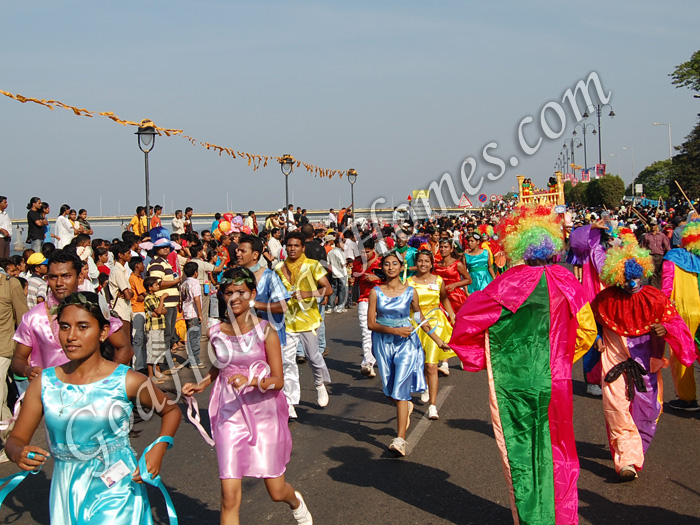Carnival in Goa 2009

Carnival in Goa is religiously held annually four days before Ash Wednesday, the day of fasting that marks the beginning of Lent. The word carnival literally means removing meat as traditionally during lent Roman Catholics abstain from consuming meat. The festival which is symbolic of Goa's Portuguese legacy involves a public celebration in form of continuous parades of coloured floats and dancers.
On February 21, 2009 spirit of festivity descended on Goa and the year's first carnival float parade was flagged off in Panjim, the capital city by the chief minister Mr Digambar Kamat and Governor Mr. SS Sidhu. A sea of humanity descended on the streets of Panaji to witness the 2009 Carnival float parade that moved merrily along the picturesque riverside driveway along the Mandovi River. The procession started at new Patto Bridge.
The float of King Momo (The King of the Carnival) that led the parade was unique this year and had children performing the samba for the crowd. The carnival was not affected by the recession and many tourists came to Goa especially for the four day festivities. The floats were brightly coloured, artistic and larger than life and more that 70 floats were present at the parade. People were dressed in elaborate costumes, dancing to the samba rhythms.
The carnival floats proceed to different main cities throughout Goa the four days, from Panjim to Margaon to Vasco and ending in Mapusa. Each of the floats in entered into a category. The floats compete to try and win prize money. Carnival is the last opportunity to have fun before lent starts.








